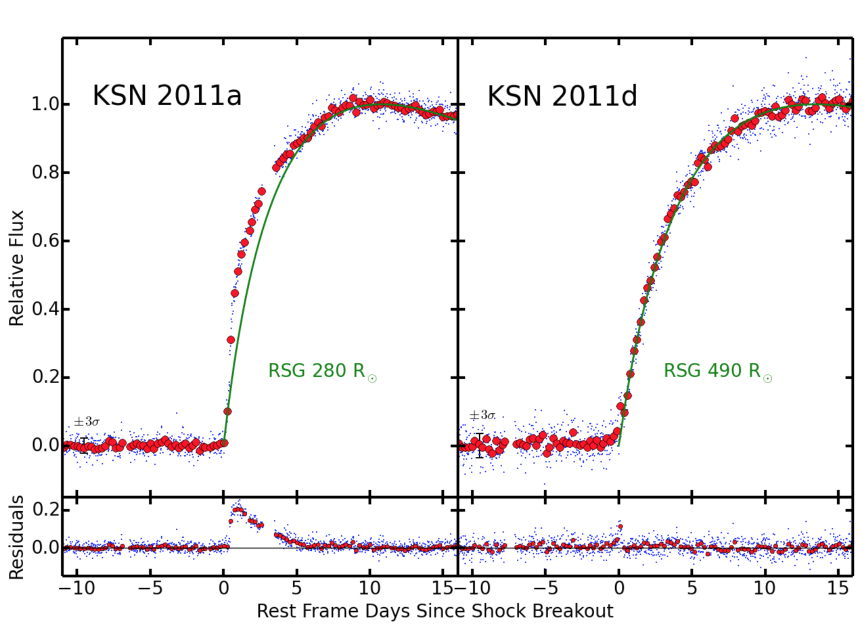
 Credit: Garnavich et al. 2016; Kepler Mission
Credit: Garnavich et al. 2016; Kepler Mission
Breakout
Supernovae are among the most powerful explosions that occur in the Universe. Supernovae occur when a star runs out of nuclear fuel, which causes the star to first collapse, then explode. But because stars do not clearly signal to us exactly when they are about to explode, supernova explosions are generally studied only after the fact. Catching a star in the act of exploding is difficult to do. To find such rare events, astronomers try to monitor large numbers of stars over long periods of time to look for sudden, large changes in brightness. Astronomers have re-purposed NASA's planet hunter, the Kepler space telescope, to help hunt for exploding stars. Kepler, in its new mission incarnation, or K2, lets astronomers obtain uninterrupted, high-precision measures of the brightness of a large number of stars. Kepler's prime mission is to determine the slight dip in stellar brightness when a planet orbiting a star passes in front of the star. But Kepler catches lots of other interesting astrophysical events too. The graphs above show the change in brightness of two exploding stars in distant galaxies as measured by Kepler. Kepler's steady stare caught the stars before they exploded and measured the rise in brightness up to and past its peak. These two stars, called KSN2011a and KSN2011d, showed similar but distinct behavior. The increase in brightness in KSN2011a during the rise to maximum brightness was significantly higher than the change in brightness (shown by the green line) that astronomers expected. Astronomers think this excess was produced by the supernova shock wave hitting a large amount of material lost from the star prior to the explosion. On the other hand, the rise in brightness of KSN 2011d followed astronomer's expectations more exactly. However, at the start explosion of KSN2011d, astronomers detected a sudden blip in brightness well above the theoretical model. Astronomers interpret this blip as the shock produced by the explosion of the star breaking free of the stellar surface. Using these data, astronomers are able to determine the size of the exploding stars at the time of the explosion: each is larger than the distance between the earth and the Sun. Each explosion produced more energy than the Sun will generate over its entire lifetime.
Published: March 28, 2016
<
HEA Dictionary ● Archive
● Search HEAPOW
● Other Languages
● HEAPOW on Facebook
● Download all Images
● Education ● HEAD
>

Each week the HEASARC
brings you new, exciting and beautiful images from X-ray and Gamma ray
astronomy. Check back each week and be sure to check out the HEAPOW archive!
Page Author: Dr. Michael F. Corcoran
Last modified Tuesday, 27-Feb-2024 10:15:22 EST


